Search Results for: school resources
-
NAMI Shares: Back to School Resources
The National Alliance on Mental Illness (NAMI) has shared new back to school resources to build student resilience for parents, educators, kids, teens, and college students. See more...
-
Suicide Prevention Training and Resources for Schools
As a new school year begins, we’ve compiled a list of training and resources to help schools prevent suicide. Please share them with your communities today: See more...
-
Suicide Prevention Resources for Schools
As students and teachers head back to school, help put suicide prevention on the agenda for the new academic year by spreading the word about these resources: See more...
-
Suicide Prevention Resources for Schools
As students head back to school, help put suicide prevention on the agenda for the new academic year by using and sharing these materials: Suicide prevention resources for middle school and high school settings Information sheets to help high school teachers and mental health providers prevent suicide Resources for teens who may be at risk A toolkit to help middle and high schools respond to a student suicide […] See more...
-
Suicide Prevention Resources for Schools
As students head back to school, help put suicide prevention on the agenda for the new academic year by using and sharing these materials: Suicide prevention resources related to middle school and high school settings Information sheets to help high school teachers and mental health providers prevent suicide Resources for teens who may be at risk for suicide A toolkit to help middle and high schools respond to […] See more...
-
Suicide Prevention Resources for Schools
As students and teachers head back to school after the holiday break, help put suicide prevention on the agenda for the new calendar year by using and sharing these materials: Suicide prevention resources related to middle school and high school settings Information sheets to help high school teachers and mental health providers prevent suicide Resources for teens who may be at risk for suicide A toolkit to help middle […] See more...
-
A Model School Policy on Suicide Prevention: Model Language, Commentary and Resources
This document was developed by ensuring that local policies are in line with the latest research in the field of suicide prevention and identifying best practices for a national framework. The model is comprehensive, with modular language that may be adapted to draft policies based on the unique needs of individual districts. The language and […] See more...
-
After a school tragedy: Readiness, response, recovery & resources
This resource helps schools support students and families in the aftermath of violence and trauma by providing strategies for readiness, response, and recovery. The focus is on the after-effects of traumatic events such as school shootings or suicides and how things like complicated grief and survivors’ guilt can place students at risk for suicide. Resources […] See more...
-
Suicide Prevention Resources for Schools
SPRC extends its deepest condolences to Marjory Stoneman Douglas High School and the Sandy Hook community in the wake of recent suicide deaths. The following resources can assist schools in their suicide prevention efforts: Suicide prevention resources related to middle school and high school settings Information sheets to help high school teachers and mental health providers prevent suicide Resources for teens who may be at risk for […] See more...
-
Suicide Prevention Resources for Schools
As students and teachers head back to school, help put suicide prevention on the agenda for the new academic year by using and sharing these materials: Suicide prevention resources related to middle school and high school settings Fact sheets to help high school teachers and mental health providers prevent suicide Resources for teens who may be at risk for suicide A toolkit to help middle and high schools […] See more...
-
Tribal Boarding School Toolkit for Healing
The Northwest Portland Area Indian Health Board (NPAIHB) has released the Tribal Boarding School Toolkit for Healing. This toolkit provides guidance and resources for those working in Tribal communities on talking about and helping to heal the generational trauma of boarding schools. NPAIHB developed the toolkit in collaboration with the Indian Health Services (IHS) and […] See more...
-
Resources to Support Mental Health and Coping with the Coronavirus (COVID-19)
The Suicide Prevention Resource Center (SPRC) has compiled a selection of web pages and information sheets on mental health and coping with the effects of COVID-19. These resources are a selection from key organizations in the field. We will continue to update this list as new resources become available. *Note: For crisis counseling and support […] See more...
-
Responding After a Suicide: Best Practices for Schools
Schools that experience a suicide in their communities are often uncertain about how to respond and can benefit from others with expertise in this area. State and local organizations contacted by schools in crisis can assist by providing information about best practices and practical resources. This webinar presents safe and effective ways in which schools, […] See more...
-
A Strategic Approach to Suicide Prevention in High Schools
This webinar provided an overview of the research on school-based suicide prevention programs and identified resources that can be helpful in developing and implementing your own program. In addition, it offered examples of how two states developed programs to prevent suicide in a variety of school systems, including those serving ethnically diverse students. While this […] See more...
-
West Virginia Department of Health and Human Resources
Acknowledging the promotion of life in our West Virginian Youth, the Adolescent Suicide Prevention and Early Intervention (ASPEN) project works vigorously toward creating a comprehensive recognition and referral network in West Virginia. Suicide is the SECOND leading cause of death in our West Virginian Youth ages 15-24, ranking our state at 11th in the nation […] See more...
-
West Virginia Department of Health and Human Resources
Acknowledging the promotion of life in our West Virginian Youth, the Adolescent Suicide Prevention and Early Intervention (ASPEN) project works vigorously toward creating a comprehensive recognition and referral network in West Virginia. Suicide is the SECOND leading cause of death in our West Virginian Youth ages 15-24, ranking our state at 11th in the nation […] See more...
-
Middle School
Middle school is an important setting for supporting mental health and suicide prevention among youth. Bullying and cyberbullying are key risk factors to consider. A comprehensive approach to suicide prevention in this setting should include efforts targeting groups at risk, as well as general activities aimed at creating a positive and supportive school environment and promoting connectedness for all students. […] See more...
-
High School
Suicide prevention programs in high school settings should use a comprehensive approach that combines multiple strategies addressing the risk and protective factors in the student population. These strategies can include protocols for educating students and parents about suicide prevention, training school personnel, identifying and helping students at risk, and responding after a suicide death. All suicide prevention programs should ensure that resources […] See more...
-
Schools
-
New Hampshire School Districts Move to Ease Teacher Stress, Burnout
New Hampshire Public Radio Many educators are experiencing stress and mental health issues, with some, such as teachers of color, more affected than others. In response, school districts across the country are taking steps to support teacher mental health. In New Hampshire, a group of teachers attended a recent training to prevent burnout. Other states, […] See more...
-
Joint Statement from the Suicide Prevention Resource Center and National Action Alliance for Suicide Prevention about New Federal Report on Use of Indian Boarding Schools
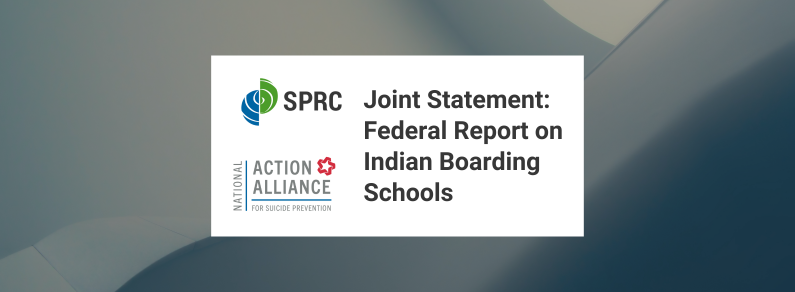
U.S. Secretary of the Interior Deb Haaland and Assistant Secretary for Indian Affairs Bryan Newland recently released volume 1 of the Federal Indian Boarding School Initiative investigative report. Commissioned by Secretary Haaland, the report aims to thoroughly examine the painful history of federal American Indian boarding school policies and establish a foundation for the Interior Department’s ongoing work to […] See more...
-
Joint Statement on Federal Indian Boarding School Report
SPRC and the National Action Alliance for Suicide Prevention (Action Alliance) acknowledge and honor the reactions—such as feelings of grief, loss, anger, or horror—that may arise among those in Indian Country in response to the recently released Federal Indian Boarding School Initiative investigative report. Read our joint statement to find resources for coping, as well as culturally resonant […] See more...
-
Why a Focus on Mental Health Is Essential for Students Returning to School in the Fall, Experts Say
ABC News School districts across the country are increasing support for student mental health this fall. To help students cope with stress and trauma from the COVID-19 pandemic, schools are preparing a variety of measures for their return to the classroom. These include focusing on social emotional learning, adding counselors and social workers, and allowing […] See more...
-
Suicide Prevention in Schools: Strategies for COVID-19
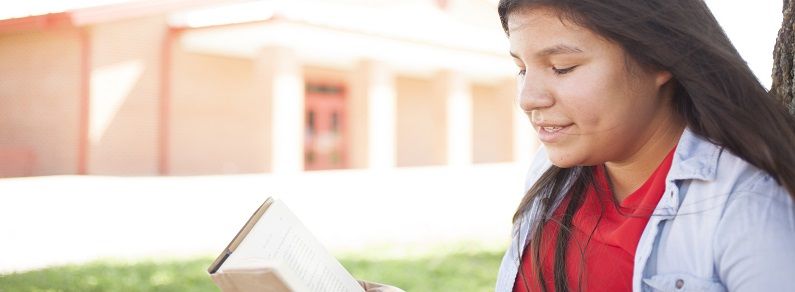
Addressing the mental health needs of students in school communities is more important than ever before. The COVID-19 pandemic has exacerbated the stress and trauma faced by many students while bringing new challenges, such as isolation and increased risk for adversity at home. Schools play a unique and critical role in addressing the pandemic’s potential mental health effects and preventing suicide. While […] See more...
-
Suicide Prevention, Intervention, and Postvention During COVID-19: What School-Based Staff Need to Know

SPRC is pleased to co-host a webinar with the School-Based Health Alliance and the National Center for School Mental Health as part of their School Health Services National Quality Initiative. Suicide Prevention, Intervention, and Postvention During COVID-19: What School-Based Staff Need to Know will provide information and resources to support school staff as they manage current or emerging suicidal […] See more...
-
WASHINGTON, D.C.: Mental Health Help Expanding at D.C. Schools
U.S. News and World Report Washington, D.C., is working to connect students with mental health support. To help increase access to services, the district is testing out partnerships between public schools and community mental health organizations. So far, 76 schools have been assigned community mental health clinicians, with a total of 119 planned by the […] See more...
-
MASSACHUSETTS: As Student Suicides Rise, a Harvard Case Opens New Questions about Schools’ Responsibility
WGBH A recent lawsuit is raising questions about colleges’ role in preventing suicide on campus. After Harvard University student Luke Tang attempted and later died by suicide, his father took legal action against the school and some of its employees for failing to prevent his son’s death. The lawsuit expands on a 2018 state supreme […] See more...
-
Upstream Suicide Prevention in Connecticut Elementary Schools
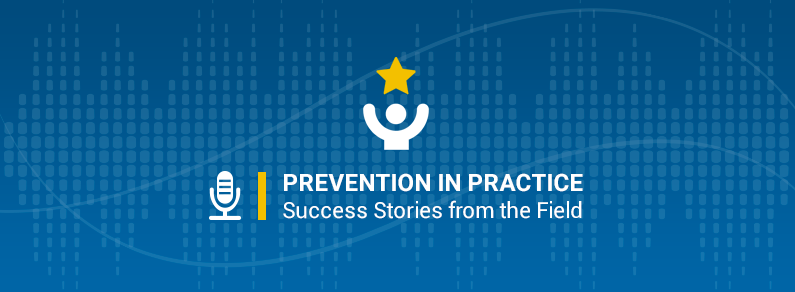
In this five-minute story, Heather Spada from United Way of Connecticut describes her state’s effort to create and implement an upstream suicide prevention curriculum in elementary schools. Featuring Gizmo the therapy dog, Gizmo’s Pawesome Guide to Mental Health is helping elementary school staff effectively teach children about mental health, life skills development, and social connectedness. This effort […] See more...
-
Model School District Policy on Suicide Prevention
The American Foundation for Suicide Prevention (AFSP) and its partners have released Model School District Policy on Suicide Prevention: Model Language, Commentary, and Resources. The document outlines model policies and best practices for school districts to prevent student suicide. See more...
-
Revised Role Sheets for High School Teachers and Mental Health Providers
SPRC is pleased to announce the release of two revised and redesigned information sheets to help high school teachers and mental health providers prevent student suicide: Preventing Suicide: The Role of High School Teachers Preventing Suicide: The Role of High School Mental Health Providers The sheets aim to help these key school personnel understand their role in preventing suicide, […] See more...
-
Preventing Suicide: The Role of High School Mental Health Providers
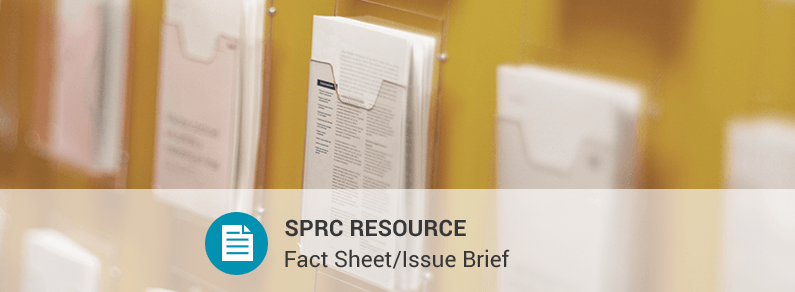
This sheet provides information and resources on suicide prevention for high school mental health providers. See more...
-
Preventing Suicide: The Role of High School Teachers
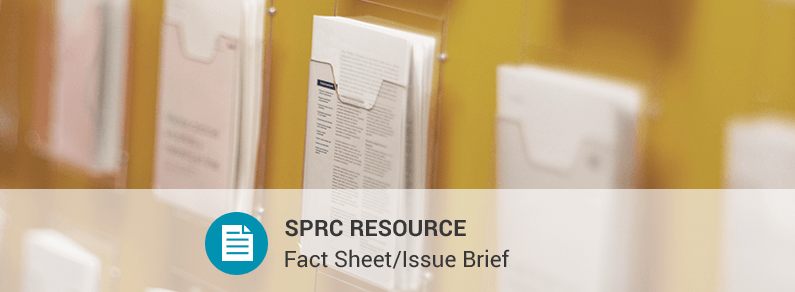
This sheet provides information and resources on suicide prevention for high school teachers. See more...
-
New Articles: Suicide Contagion and Clusters in Schools
The National Association of School Psychologists (NASP) has published two articles on suicide contagion and clusters in its latest newsletter. Part one discusses what school psychologists should know and part two discusses what school psychologists can do about suicide contagion and clusters. See more...
-
After a School Tragedy
The Substance Abuse and Mental Health Services Administration (SAMHSA) Mental Health Technology Transfer Center (MHTTC) Network has released a resource to help schools support students and families after violence or trauma. See more...
-
Coping after suicide loss: Tips for grieving adults, children and schools
This resource provides guidance on how to cope with one’s own emotions after the suicide death of a friend or family member, how to talk to children and teens about a suicide and how schools should safely handle communicating about a suicide death in the school community. Help resources are also provided. See more...
-
A Look Back at New SPRC Resources in 2018
Suicide Prevention Toolkit for Primary Care Practices After a Suicide: A Toolkit for Schools, Second Edition Surveillance Success Stories – Centerstone of Tennessee Suicide Surveillance Strategies for American Indian and Alaska Native Communities CALM: Counseling on Access to Lethal Means More SPRC Resources from 2018 See more...
-
ILLINOIS: Teens Are Anxious and Depressed, and Turning to the School Nurse for Help. But Most Illinois Schools Don’t Have One.
Chicago Tribune The role of Illinois school nurses has expanded to help meet the mental health needs of students. In addition to their traditional role of caring for physical health concerns, school nurses are increasingly addressing mental health issues such as depression and anxiety. To help nurses take on this larger role, some schools are […] See more...
-
MICHIGAN: Inside West Bloomfield School’s Attempt to Combat Suicide, Help Students Cope
Detroit Free Press After several student suicide deaths, West Bloomfield High School decided to take a different approach to helping students. Part of that approach was implementing a new curriculum designed for their school, called Prepare U. Described as an “experiential mental health” program, it teaches students about mental health issues and provides them with […] See more...
-
13 Reasons Why Resources
Since the second season of Netflix’s 13 Reasons Why comes out on May 18, we would like to remind you about our list of commonly asked questions about the series. It contains resources to help parents, schools, members of the media, and community leaders discuss the series and promote awareness about suicide prevention. See more...
-
ARIZONA: Ending the Stigma: Programs Create Conversations about Mental Health in Arizona Schools
Arizona Daily Sun Arizona schools are trying to get their students talking about mental health. While the state does not have a mental health education requirement, some schools are implementing programs that aim to raise awareness of mental health issues. For example, the National Alliance on Mental Illness (NAMI) Ending the Silence program has been […] See more...
-
ALABAMA: Athens School Board Approves Youth Suicide Prevention Policy
Decatur Daily The Athens, Alabama, school board has approved a policy for preventing youth suicide. The policy calls on schools to train all certified personnel in suicide prevention, teach students about the warning signs for suicide, and provide information on crisis intervention and other resources to the school community. It also has provisions for supporting […] See more...
-
CALIFORNIA: “It’s OK to Say Suicide”: School Districts Set New Tone for Suicide Prevention Awareness
Visalia Times-Delta Following the recent passage of suicide prevention legislation, California school districts are taking steps to implement suicide prevention programs for the new school year. Assembly Bill 2246 requires public schools to develop suicide prevention, intervention, and postvention policies for students in grades 7 to 12. Passed in 2016, the bill calls for policies […] See more...
-
ARIZONA: Arizona High Schools Add Suicide Prevention Numbers to ID Badges
All the Moms Four Phoenix area school districts and several charter schools now display the phone number for Teen Lifeline on the back of their high school ID badges. Teen Lifeline is a statewide crisis services hotline that offers resources for adolescents who are struggling with a variety of challenges, including suicide, physical or sexual […] See more...
-
Get Ready for School

August is a time when many people head to the beach or mountains to take a well-deserved break from their jobs, find relief from the heat, and spend time with friends and family. But for school teachers and administrators, August is spent writing lesson plans and attending to the many things that need to be […] See more...
-
Suicide Postvention: The Role of the School Community After a Suicide
Kognito is hosting a webinar on the role of school communities after a suicide. Presenters include Richard Lieberman, lecturer in the Graduate School of Education at Loyola Marymount University, and Scott Poland, professor at College of Psychology and co-director of the Suicide and Violence Prevention Office at Nova Southeastern University. They will discuss the rationale and primary goals […] See more...
-
Suicides Prompt Medical Schools to Finally Address Student Mental Health
KQED Medical schools and residency programs across the country are increasing efforts to prevent suicide and promote mental health among students and residents. These include wellness and stress reduction programs, mental health screenings, and support services. The University of Southern California (USC) Keck School of Medicine requires all of its students to undergo “Keck Check” […] See more...
-
13 Reasons Why Resources
SPRC has compiled a list of commonly asked questions about the Netflix series 13 Reasons Why, along with resources to help parents, schools, members of the media, and community leaders discuss the series and promote awareness about suicide prevention. See more...
-
MICHIGAN: Oxford High School Students Begin Project Called “13 Reasons Why Not”
Oakland Press News In response to the Netflix series 13 Reasons Why, a group of Michigan teens have launched a project called 13 Reasons Why Not. While the main character in the series provides her explanations for wanting to die, students at Oxford High School are voicing their motivations for wanting to live. Every morning for […] See more...
-
CHINA: Nine Hong Kong Schools Chosen for Pilot Scheme to Prevent Student Suicides
South China Morning Post A suicide prevention pilot program will be rolled out at nine schools in Hong Kong following a spate of recent suicides among students. Based on recommendations from the Committee on the Prevention of Student Suicides, the program will include increased funding for mental health care and support services in schools and […] See more...
-
SOS Signs of Suicide Middle School and High School Prevention Programs
This universal depression education and suicide prevention program for middle or high school students teaches them how to address suicidal thoughts and behaviors in themselves or others. See more...
-
Suicide Prevention: A Gatekeeper Training for School Personnel Added to BPR Section III
This two-hour training, developed by the Riverside Trauma Center, is designed for licensed school personnel, including elementary through high school teachers, administrators, and support staff. It covers basic suicide facts, warning signs, and risk and protective factors and offers ways to ask students about suicidal thoughts and behaviors and help students who may be struggling to access […] See more...
-
Suicide Prevention: A Gatekeeper Training for School Personnel
Suicide Prevention: A Gatekeeper Training for School Personnel, developed by the Riverside Trauma Center, is a two-hour training for licensed school personnel. It covers basic suicide facts, warning signs, and risk and protective factors. It also offers ways to ask students about suicidal thoughts and behaviors and ways to help students who may be struggling to […] See more...
-
NEBRASKA: New state law requires more suicide prevention training in schools
WOWT News For the first time, all public school teachers in Nebraska will be required this year to undergo an hour of suicide prevention training. Using a virtual training program by Kognito, educators will observe and practice techniques for responding to students who may need help. “The program gives them some information about how the […] See more...
-
Bullying Prevention and Suicide Prevention for Schools: A Digital Approach from SAMHSA
This recently archived webinar provides an overview of the risk and impact of bullying and suicide in school-aged children and highlights the connection between these public health issues and the “whole child” concept. The webinar showcases SAMHSA’s mobile applications—KnowBullying and Suicide Safe—and other key resources as tools to promote bullying prevention and suicide prevention in schools. See more...
-
Schools take on stress
US News & World Report Colleges and universities are taking innovative steps to reduce stress and anxiety among students. A recent national survey reported that almost a third of college students said they felt so depressed during the previous year that it was difficult to function, more than half had experienced overwhelming anxiety, and almost […] See more...
-
Don’t do it alone: A school system rises to the challenge of three student suicides
Larry Berkowitz, EdD, director of Riverside Trauma Center, discusses developing a school postvention response by sharing an example about a large suburban school system. The school system’s postvention plan helped them respond with care and consistency to the deaths of three students in one school year, and implement a planning process that drew on community resources […] See more...
-
USC School of Social Work study pinpoints a veteran’s vulnerability
USC News In a study published by Current Psychiatry Reports in June, researchers at the University of Southern California have identified specific factors that heighten suicide risk for military veterans. Co-author Carl Castro said “Our goal with this research was to focus on points where veterans are particularly vulnerable so we can develop effective interventions.” They found […] See more...
-
PREPaRE School Crisis Prevention and Intervention Training Curriculum (2nd Edition)
The PREPaRE School Crisis Prevention and Intervention Training Curriculum (2nd Edition), developed by the National Association of School Psychologists, consists of two complementary workshops. Workshop 1 is designed to help schools create systems to meet the safety and crisis prevention and preparedness needs of students, staff, and families. Workshop 2 focuses on mental health crisis intervention […] See more...
-
Glimmers of hope as Western Alaska school goes three years without suicide
The Alaska Dispatch After three suicides among students at a small school in Western Alaska a few years ago, the school district took steps to establish a strong anti-suicide approach. Many in the area are now cautiously hopeful that the changes are having a good effect. Rather than focusing only on a single intervention, the […] See more...
-
Creating Suicide Safety in Schools
This one-day workshop for school-based teams prepares them to create realistic short-term plans for effective suicide prevention and response. See more...
-
At-Risk for Middle School Educators
Kognito At-Risk for Middle School Educators is a 50-minute, online, interactive gatekeeper training program that teaches middle school educators and staff how to (1) identify students exhibiting signs of psychological distress, including depression and thoughts of suicide, (2) approach students to discuss their concern, and (3) make a referral to school support personnel. During the training, learners […] See more...
-
Recommendations for School-Based Suicide Prevention Screening
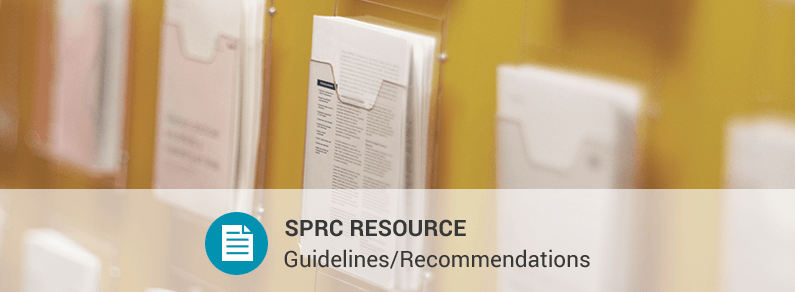
These recommendations for school-based screening are based on a literature review and the experience of Garrett Lee Smith (GLS) grantees. See more...
-
More Than Sad: Suicide Prevention Education for Teachers and Other School Personnel
Developed by the American Foundation for Suicide Prevention, More Than Sad: Suicide Prevention Education for Teachers and Other School Personnel is... See more...
-
School Suicide Prevention Accreditation
Developed by the American Association for Suicidology, the School Suicide Prevention Accreditation Program is a self-study course for school... See more...
-
Gryphon Place Gatekeeper Suicide Prevention Program-A Middle School Curriculum
The Gryphon Place Gatekeeper Suicide Prevention Program: A Middle School Curriculum is a universal prevention program for Grades 7-8, developed by... See more...
-
Postvention standards manual: A guide for a school’s response in the aftermath of a sudden death
The following manuals are undergoing revisions and will be made available as soon as they have been completed. STAR-Center recommends that school districts, working closely with their community resources, prepare for tragedies by developing policies and procedures that may be activated on very short notice. This manual is intended to help school personnel prepare for […] See more...
-
The Wisconsin components of school-based suicide prevention, intervention and postvention model
Outlines essential components, and provides guidelines and procedures for schools to follow for suicide prevention, intervention and postvention for Wisconsin. Appendices include procedures for crisis teams, communicating with the media, facts about suicide and local and national resources. See more...
-
LOOK LISTEN LINK: A Health Curriculum for Middle School
Developed in Washington State, LOOK LISTEN LINK is a curriculum designed for middle school-aged youth. It consists of four 45-minute lessons that focus on identifying causes of stress along with healthy ways of coping with stress and anxiety. Another significant focus of the program is teaching youth how to recognize friends who are depressed and […] See more...
-
Youth suicide prevention, intervention, and postvention guidelines: A resource for school personnel
This guide describes the components of a comprehensive school-based suicide prevention program. It also includes an assessment form for schools to determine if they are ready to manage suicidal behavior; detailed guidelines for implementing suicide intervention and postvention in schools; and appendices with related materials, including forms and handouts. The Maine Youth Suicide Prevention, Intervention […] See more...
-
Addressing self-injury in the school setting
Journal of School Nursing. 2008 Jun; 24(3): 124-30. A comprehensive plan for school nurses and guidance department staff. Discusses: the alarming increase of self-injurious behavior among adolescents; school nurses, educated about self-injury, as resources for other school staff members; prevention strategies for all adolescents and for at-risk adolescents; referral and early access to counseling; and […] See more...
-
High School Gatekeeper Curriculum
Developed by Gryphon Place, the Gatekeeper Suicide Prevention Program: A High School Curriculum is organized into four class-period length lessons. A gatekeeper philosophy—i.e., identification of those exhibiting risk behaviors, asking about behaviors of concern, and referral of those possibly at-risk to a trusted adult—is the primary theme of the lessons. Also emphasized are the de-stigmatization of mental […] See more...
-
Media guidelines for school administrators who may interact with reporters about youth suicide
This brief manual explores how media accounts can actually serve as a suicide prevention tool by: assisting news professionals to report responsibly and accurately; using a media request for information as an opportunity to influence the contents of the story; emphasizing the importance of listing available community resources for individuals at-risk and describing what is […] See more...
-
Lifelines postvention: Responding to suicide and other traumatic death
Lifelines postvention: Responding to suicide and other traumatic death is a 170-page manual with accompanying CD that provides a template for creating a school-based response to the death of a member of the school community by suicide or other traumatic means. The manual emphasizes the critical, but limited, role of the school in managing the […] See more...
-
Communication and Support as Suicide Prevention for LGBTQIA2S+ Youth
Positive messaging and community support can help promote well-being among LGBTQIA2S+ youth, a new study found. The results suggest a need for increased efforts to communicate with and about LGBTQIA2S+ youth to support their mental health and prevent suicide. This qualitative study aimed to examine how positive communications and interactions can promote mental health and […] See more...
-
Surgeon General Lays Out Framework to Tackle Loneliness and “Mend the Social Fabric of Our Nation”
CNN U.S. Surgeon General Vivek Murthy recently released an advisory on the country’s “epidemic of loneliness and isolation.” Part of the administration’s broader mental health efforts, the advisory includes a framework for a National Strategy to Advance Social Connection. Research has shown that social isolation is associated with a variety of physical and mental health […] See more...
-
Be the Change: How to Support Suicide Prevention Efforts This September
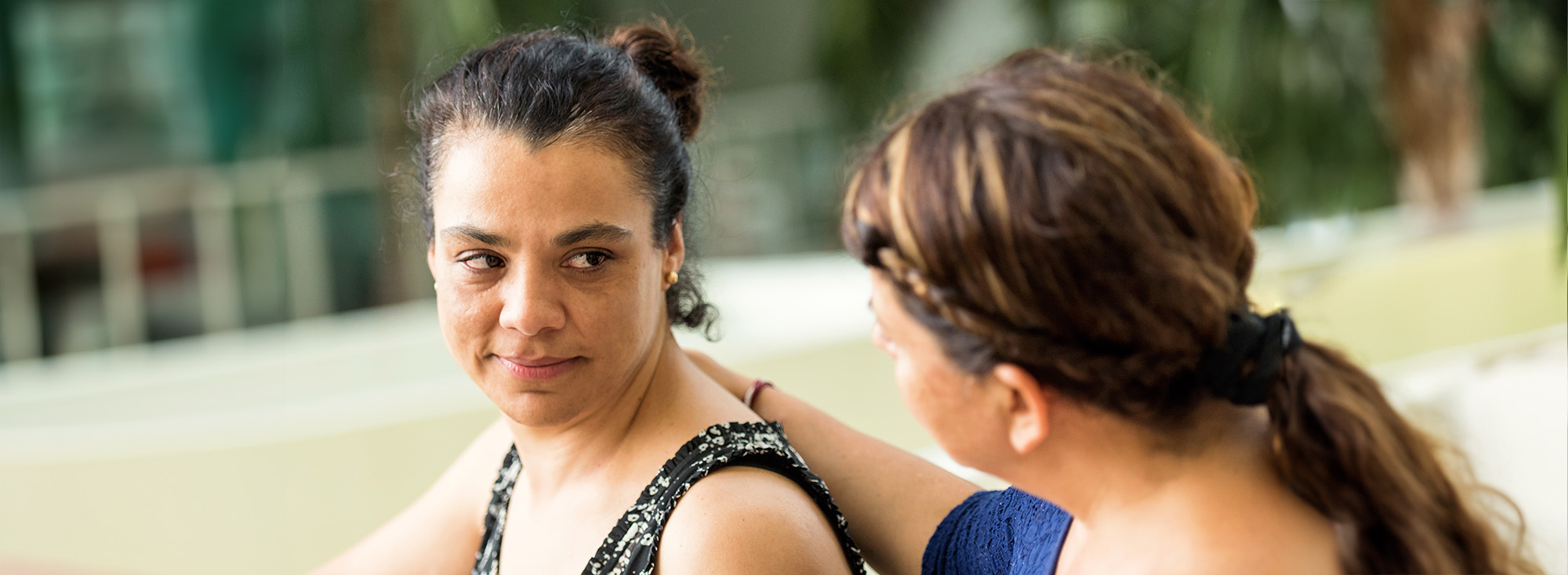
This Suicide Prevention Month, let's encourage everyone to get involved. See more...
-
Mental Health Promotion and Suicide Prevention for LGBTQIA2S+ Youth

This series of guides can help professionals, families, and communities support the mental well-being of LGBTQIA2S+ youth. See more...
-
Meeting Rural Men Where They Are

To reduce suicide rates among rural men, we need to meet them where they are. See more...
-
Black History Month: An Invitation to Cultural Humility

Learn how to foster the three elements of cultural humility and incorporate them in your work. See more...
-
2018 Garrett Lee Smith Suicide Prevention Grantee Meeting
2018 Garrett Lee Smith Suicide Prevention Grantee Meeting Resources Note: We have only included presentations that the presenters agreed to share on this website. Agenda Campus AgendaState and Tribal Agenda Monday, March 19 (Day 1) Campus Plenary Presenter(s):Bonnie Lipton, MPH, Suicide Prevention Resource Center (SPRC) | View Presentation – Comprehensive Approach: SPRCNance Roy, EdD, The Jed Foundation (JED) | […] See more...
-
2012 Garrett Lee Smith State and Tribal Suicide Prevention Grantee Meeting
AGENDA for 2012 Garrett Lee Smith Suicide Prevention Grantee Meeting Note: Some presentations are not included due to outdated content Getting Started with Sustainability Planning/Leaving a Legacy These are updated versions of the tools used at this session. Presenter(s):Julie Ebin, SPRCTerri Yellowhammer, SPRC Campus Breakout: Collaborating with Alcohol Programs on Campus Presenter(s):Kim Dude, University of MissouriPeggy […] See more...
-
2010 Garrett Lee Smith Campus Suicide Prevention Grantee Meeting
AGENDA for 2010 Garrett Lee Smith Suicide Prevention Meeting Note: Some presentations are not included due to outdated content Plenary: The Institute of Medicine Report: Progress and Possibilities for Preventing Mental Health Problems Among Young People Presenter(s):Hendricks Brown, Ph.D., University of Miami, Miller School of MedicineLinda Langford, Sc.D., SPRC View Hendrick Brown presentationView Linda Langford presentation […] See more...
-
2008 Garrett Lee Smith Campus Suicide Prevention Grantee Meeting
Getting Senior Administration Buy-In Respondents: Wanda Clifton-Faber, Blue Mountain Community College; Les Lawrence, Rensselaer Polytechnic Institute; Carolyn Kern, University of North TexasPresenter(s):Jacquelyn Elliott, Associate Vice President for Student Affairs, Northwest Missouri State University Increasing Help-Seeking Among Students of Color Presenter(s):Nickole Scott Conerly, Howard UniversityJacque Gray, University of North DakotaRichard Shadick, Pace UniversityPereta Rodriguez, City College […] See more...
-
2005 Garrett Lee Smith Suicide Prevention Grantee Meeting
First SAMHSA Suicide Prevention Grantees Orientation Meeting AGENDA for 2005 GLS Suicide Prevention Grantee Meeting Note: Some presentations are not included due to outdated content. Pragmatics Regarding Evaluating Suicide Prevention Initiatives Presenter(s):John Kalafat, Rutgers Graduate School of Applied and Professional Juvenile Justice, Behavioral Health, and Suicide Prevention Presenter(s):Randy Muck, CSAT, SAMHSAPat Shea, CMHS, SAMHSA SPRC (Campus) Presenter(s):Laurie Davidson, […] See more...
-
13 Reasons Why
SPRC has received many questions about the Netflix series 13 Reasons Why (13RW). We list the most common questions from parents, schools, media, and community leaders below, with resources to help you talk about the series and suicide risk and prevention. If you are thinking of hurting yourself, or if you are concerned that someone you […] See more...
-
Poor Mental Health in U.S. Teens Exacerbated by Negative Experiences during Covid-19 Pandemic, Survey Finds
CNN In a recent study, most teens reported having at least one adverse childhood experience during the pandemic. Adverse childhood experiences, or ACEs, include physical or emotional abuse, food insecurity, parental job loss, cyberbullying, or sexual violence. Teens with such experiences were more likely to report poor mental health and suicide attempts compared to those without. […] See more...
-
Suicide Prevention among Lesbian, Gay, Bisexual, and Transgender Youth: Expanding the Frame and Broadening Our Approaches
This webinar will focus on reducing risk for suicide and increasing positive outcomes for lesbian, gay, bisexual and transgender (LGBT) youth. Event Presenter(s) Effie Malley, MPA is Director of the National Center for the Prevention of Youth Suicide at the American Association of Suicidology. She previously worked at the national Suicide Prevention Resource Center where she […] See more...
-
Advancing Suicide Prevention Practice in the Emergency Department Setting
Suicide attempts make up an increasing proportion of emergency department (ED) visits and hospitalizations, and the care received during and subsequent to an ED visit by persons at risk for suicide can have long-term consequences—either good or bad. This webinar presents a cross-section of promising and evidence-based strategies for preventing suicide among patients visiting the […] See more...
-
Suicide Narratives in the News Media: What Effect Might They Have and What Can We Do?
The news media do more than report facts, they tell stories about events and people. These narratives can influence public perceptions about issues, including their causes and appropriate solutions. For example, extensive news coverage of suicides among LGBT youth, military service members, and individuals affected by the U.S. economic crisis has created a basic storyline […] See more...
-
Promoting Connectedness to Prevent Suicide
Evaluations of interventions directed toward preventing suicidal behavior have shown that promoting connectedness is a promising suicide prevention strategy. Connectedness to others, including family members, teachers, coworkers, community organizations, and social institutions, is an important protective factor. Positive relationships can help increase a person’s sense of belonging, foster a sense of personal worth, and provide […] See more...
-
The Patient Safety Screener: A Brief Tool to Detect Suicide Risk
This seven-minute video describes the first part of the Patient Safety Screener, the Patient Safety Screener (PSS-3), a tool for identifying patients in the acute care setting who may be at risk of suicide. The PSS-3 can be administered to all patients who come to the acute care setting, not just those presenting with psychiatric […] See more...
-
Promoting Help-Seeking Among College Students: Strategies for Suicide Prevention
This webinar will focus on one component of a comprehensive, public health approach to suicide prevention and mental health promotion on campuses: increasing student help-seeking. Presenters will share recent research findings and will describe strategies their campuses are employing to increase the likelihood that a student who needs mental health services will seek out and […] See more...
-
Advances in Suicide Prevention: Research, Practice and Policy Implications for LGBT Populations
In its efforts to address behavioral health disparities, the Substance Abuse and Mental Health Services Administration (SAMHSA) has prioritized the goal of suicide prevention among vulnerable populations, including lesbian, gay, bisexual, and transgender (LGBT) Americans. Despite strong indications of elevated risk of suicidal behavior in LGBT people, limited attention has been given to research, interventions, or suicide […] See more...
-
Advances in Suicide Prevention: Research, Practice, and Policy Implications for LGBT Populations
In its efforts to address behavioral health disparities, the Substance Abuse and Mental Health Services Administration (SAMHSA) has prioritized the goal of suicide prevention among vulnerable populations, including lesbian, gay, bisexual, and transgender (LGBT) Americans. Despite strong indications of elevated risk of suicidal behavior in LGBT people, limited attention has been given to research, interventions, […] See more...
-
Micro-Learning
Micro-learning provides short, targeted learning experiences. Each micro-learning resource provides relevant, practical information to help you build skills and improve outcomes. SPRC micro-learning resources can be viewed at any time on any device, so they’re always at your fingertips. A Lived Experience Story About What Makes a DifferenceWatch this brief video to learn from a […] See more...
-
Using Surveillance Data in Suicide Prevention
Designed for suicide prevention practitioners, Using Surveillance Data in Suicide Prevention offers an overview of common terms and concepts used in epidemiology. This one-hour podcast also provides information on how to identify and find data for suicide prevention, and explores traditional and non-traditional partners who can help in this effort. The podcast offers a real-life example on […] See more...
-
Promoting Treatment Strategies that Enhance Family and Social Connectedness
Suicide is the second leading cause of death among youths ages 10-24 and suicide death rates are rising. This presentation describes the Family Intervention for Suicide Prevention, a component of the SAFETY program. This trauma-informed youth and family-centered approach aims to enhance protective processes and social connections in the family and social environment that can […] See more...
-
Collaboration Is Key to Upstream Suicide Prevention

Learn how SPRC’s new Best Practices Registry will help you incorporate upstream suicide prevention in your work. See more...
-
Washington State Department of Health
The Washington State Department of Health has led activities in suicide prevention since 1994, by providing epidemiological support, implementing best practices and promoting community based prevention programs throughout Washington. Initiatives, funded from the Washington State Legislature through the General Fund, have primarily focused on raising public awareness, training those who work directly with youth, and […] See more...
-
Wartburg College
Wartburg College seeks to educate campus communities at small, rural colleges and universities about the risk factors and warning signs of suicide ideation among college students in an effort to fill gaps in service inherent to the limited campus and community resources these schools have and to create a mindset that suicide prevention is everyones […] See more...
-
Virginia Department of Health
The Virginia Department of Health’s (VDH) proposal, Virginia Youth Suicide Prevention Program (VYSPP), expands the suicide prevention infrastructure developed in Virginia under the previous six years of Garrett Lee Smith Act (GLS) funding. These funds will enable VDH to continue to provide consultation, evidence-based resources and gatekeeper training to youth servicing providers, and these funds […] See more...
-
Vermont-Center for Health and Learning
The Center for Health and Learning (CHL) is a no-profit organization dedicated to creating prevention prepared communities in Vermont, by developing and implementing statewide youth suicide and substance abuse prevention and early intervention strategies, through public/private collaboration. CHL has adopted the following goals for the 2011 State/Tribal Youth Suicide Prevention Grant: Continue to build sustainable infrastructure in […] See more...
-
Vermont – Center for Health and Learning
The Center for Health and Learning and the Vermont Department of Mental Health are partnering to strengthen and expand youth suicide prevention and intervention in Vermont through collaboration between multiple agencies and organizations. There are six major areas of focus: 1. Building infrastructure in Vermont for youth suicide prevent ion by engaging the Vermont Youth […] See more...
-
Utah – University of Utah
For decades, suicide prevention efforts have focused primarily on public school systems. Nationally, few efforts have been made to address at-risk youth in the juvenile courts. While suicide prevention in schools is necessary, unfortunately, the Utah Youth Suicide Study discovered that youth who die by suicide more frequently have contact with the juvenile court system […] See more...
-
University of Texas Brownsville
The UTB/TSC Campus Suicide Prevention Program (CSPP) seeks to raise awareness of suicide as a critical but preventable issue while offering compassion and support to affected individuals. Through innovative training and collaborative partnerships, the CSPP educates key individuals on suicide indicators, prevention strategies, and intervention measures, assuring that at-risk students are connected with appropriate resources […] See more...
-
University of Puerto Rico – Cayey
The University of Puerto Rico at Cayey proposes a program to develop a comprehensive support network and college action plan for attending potential and serious cases of suicide. The focus of this program entails training through workshops and information materials for the campus body, in its informational aspect and a smaller number in direct services. […] See more...
-
University of North Dakota
The American Indian Suicide Prevention Program at the University of North Dakota (UND) is a two-phase program that will develop a circle of care model for suicide prevention. The first phase will be development and integration at UND and the second phase will be the application of the model to tribal colleges in North Dakota. The circle […] See more...
-
United Indian Health Services, Inc.
United Indian Health Services, Inc. (UIHS) will implement culturally appropriate prevention and early intervention strategies through education program to address suicide and suicidal ideation of American Indian (AI) clients age 10-24 living in Northwestern California. Prevention efforts will include evidence-based training and education to youth, families, community members, health care providers, school and other educational […] See more...
-
Tulane University
The purpose of the Tulane University Mental Health Initiative is to achieve a comprehensive expansion of its existing programs regarding the awareness and prevention of suicide and attempted suicide, and to enhance referral services for at-risk students with mental, substance use, or behavioral disorders. Tulane has good points of entry for suicide prevention through student […] See more...
-
Trinity Christian College
The purpose of the Trinity Christian College Campus Suicide Prevention Grant program is to significantly expand the suicide prevention and response: services of a faith-based college in the Chicago area. This purpose will be met by adding a key program leader as well as grant and matching resources so that this task of prevention and […] See more...
-
Tennessee Department of Mental Health and Substance Abuse Services
The Tennessee Department of Mental Health and Substance Abuse Services (TDMHSAS) proposes Tennessee Lives Count-Connect (Connect) to reduce suicidal ideation, suicide attempts, and deaths among youth and young adults ages 10-24 by developing and implementing statewide suicide prevention and early intervention strategies, risk screening/assessment, and enhanced follow-up for 6,250 unduplicated (Year 1: 1,000; Years 2-5: 1,250/year). The […] See more...
-
Temple University
The goal of the Temple University Campus Suicide Prevention project is to create and provide a campus culture that promotes help-seeking where: (1) students receive culturally appropriate information and services around suicide prevention, mental and behavioral health and substance use/abuse with no wrong door to access services and (2) outreach is based by school/college so students are […] See more...
-
Standing Rock Sioux Tribe
The mission of the Standing Rock Sioux Tribe (SRST) Okolakiciye Unyukinipi, “Revitalizing our Societies), Oniyapi Program is to reduce youth suicide attempts and death by suicides among youth and young adults between the ages of 10—24 years old on the Standing Rock Indian Reservation by identifying and increasing referrals of suicidal youth to existing Mental […] See more...
-
Rhode Island Department of Health
The Rhode Island (RI) Youth Suicide Prevention Project will serve 10 – 24 year old youth at risk for suicide through universal, selective and indicated strategies implemented statewide. Interventions target those populations disproportionately affected by suicide risk factors. The project will create a streamlined system for crisis assessment, intervention, mental/behavioral treatment and follow-up services. Over […] See more...
-
Rhode Island Department of Health
The Rhode Island Youth Suicide Prevention Program (RIYSPP) will implement evidence-based interventions in selected schools and community-based organizations serving adolescents and their families. The project provides a safety net for at-risk youth, instituting screening/referral protocols, gatekeeper training, enhancements to college curricula, and media strategies. Target populations include sexual minorities, racial/ethnic youth, military personnel and their […] See more...
-
Pyramid Lake Paiute
This SAMHSA funded project supports, expands, and enhances suicide prevention efforts within the 3 communities of the Pyramid Lake Paiute Reservation. The proposed objectives build on suicide prevention activities completed by the Pyramid Lake Suicide Prevention Task Force and the Pyramid Lake Meth and Suicide Prevention Initiative over the last 5 years. This grant would […] See more...
-
Oregon Department of Human Services
Oregon’s Caring Connections Program will be implemented by the Oregon Public Health Division Youth Suicide Prevention Program in 14 counties and 9 Tribes. Project activities include: a coalition; community awareness campaigns; gatekeeper training; attempt reports by emergency departments to document patient access to community resources after discharge for treatment for a suicide attempt, and use […] See more...
-
Ohio Suicide Prevention Foundation
The Ohio Suicide Prevention Foundation (OSPF) is pleased to present Ohio’s Campaign for Hope, developed in response to SAMHSA’s State/Tribal Youth Suicide Prevention Cooperative Agreements. Ohio’s Campaign will provide a multi-pronged approach of suicide prevention initiatives, serving Ohio’s at-risk youth (ages 15 to 24) as well as the adults who serve them. OSPF will equip, […] See more...
-
Oglala Sioux Tribe
The purpose of the Oglala Sioux Tribe Tribal Youth Suicide Prevention Program is to develop and implement a comprehensive and sustainable program to prevent suicide among Tribal youth, ages 15-24. The approach has been designed to increase community awareness and support, strengthen capacity and resources for early identification of at-risk youth, and develop comprehensive and […] See more...
-
Northern Cheyenne Board of Health
The Northern Cheyenne Board of Health (NCBH) is a tribal health serving organization, overseeing all behavioral health programs and services on the reservation. The mission of the NCBH is to provide complete care to the community with a culturally coordinated approach. The Honor Your Life (HYL) project proposal is the result of multiple tribal programs […] See more...
-
Northeast Ohio Medical University
This proposal aims to continue the development, implementation and evaluation of the Ohio Program for Campus Safety and Mental Health. This builds on work started in 2008 to create and support a statewide network to address campus safety and mental health, with a strong focus on suicide prevention, at all institutions of higher education in the […] See more...
-
North Carolina Department of Health and Human Services
North Carolina’s youth suicide prevention program will focus on the needs of the following special populations: children of military families, youth within the juvenile justice system and the LGBTQ. Provision of a comprehensive array of suicide prevention programs will address suicidal behavior, risk and protective factors of youth from military families. Programs shall include two […] See more...
-
New Hampshire – NAMI New Hampshire
The National Alliance on Mental Illness New Hampshire (NAMI NH) served as the recipient in Cohort VIII for the SAMSHA State and Tribal Youth Suicide Prevention Program grant to expand, develop and direct New Hampshire’s youth suicide prevention and early intervention strategy, targeting high risk young people between the ages of 10 and 24. High […] See more...
-
Navajo Nation Dept. of Behavioral Health Services
On behalf of the Navajo Nation, The Navajo Department of Behavioral Health (NNDBH), along with the National Indian Youth Leadership Project (NIYLP) and the Edventures Group on the Navajo Nation, seek to implement Project Ke. Project Ke is based on a three-tiered approach modeled after the Institute of Medicine (IOM) continuum which begins with the […] See more...
-
Native American Rehabilitation Association of NW (NARA)
Life is Sacred (formerly known as the Native Youth Suicide Prevention Program) began in the Fall of 2005 upon the receipt of the Garrett Lee Smith Memorial Act grant through the Substance Abuse and Mental Health Services Administration. The applicant, Native American Rehabilitation Association, Northwest (NARA) was the only American Indian and Alaska Native (AI/AN) […] See more...
-
Montana Department of Public Health and Human Services
Montana seeks to prevent both fatal and non-fatal suicidal behaviors among youth and young adults aged 10-24 years of age. The Montana Youth Suicide Prevention and Intervention Project (MYSPI) provides planning, coordination, and resources to communities so they can address risk and incidences of suicide attempts and completions, and to implement evidence-based programs to reduce […] See more...
-
Communities
The community is an important setting for suicide prevention. A wide variety of community groups and organizations, including schools, after-school programs, health care providers, workplaces, and places of worship, can all work together to carry out prevention activities that reflect local needs and resources. Forming a broad-based suicide prevention coalition can be an important first step to understanding the suicide […] See more...
-
Mental Health America of South Carolina
Mental Health America’s proposed suicide prevention program is a state-sponsored initiative that will implement early intervention and prevention programs in schools, colleges, substance abuse systems, mental health programs, foster care systems, and other child and youth support organizations. It is based on the South Carolina Suicide Prevention Plan, a state plan created by a public […] See more...
-
Maryland Department of Health and Mental Hygiene
Maryland’s Suicide Prevention and Early Intervention Network (MD-SPIN) provides a continuum of suicide prevention training, resources, and technical assistance to advance the development of a comprehensive suicide prevention and early intervention service system for youth and young adults. MD-SPIN will increase the number of youth, ages 10-24, identified, referred and receiving quality behavioral health services, […] See more...
-
Maine Youth Suicide Prevention Program
Building Caring Connections in Maine will expand and enhance the Maine Suicide Prevention Program, a nationally recognized leader in youth suicide prevention. Strategies include provision of training and resources to key groups; suicide screening, assessment, treatment and follow-up services for youth; outreach to high-risk youth and survivors; and facilitating implementation of legislation requiring public school […] See more...
-
Maine Youth Suicide Prevention Program
The Caring About Lives in Maine project will support a strategic expansion of key priorities included in the Maine Youth Suicide Prevention Program Plan. Funds will: 1) implement suicide prevention and early intervention strategies; 2) provide training and assistance to increase the capacity of schools and youth-serving organizations to identify youth at risk and link […] See more...
-
Louisiana Department of Health
The Louisiana Partnership for Youth Suicide Prevention (LPYSP) proposes to address one of the leading causes of death among LA?s adolescents and young adults: suicide. This initiative advances strategies of the LA S.T.A.R. Plan to strengthen public and private partnerships, cultivate community efforts, mobilize existing resources, expand gatekeeper training, increase awareness of youth suicide and […] See more...
-
Linn State Technical College
Linn State Technical College (LSTC) embraces its state mandated mission “to prepare students for profitable employment”. In order to fulfill this mission, LSTC must insure the safety of its students, including both mental and physical well being of each student. Enhancing current resources, training and programs, the collaborative development with the Community Health Center of […] See more...
-
Children Ages 12 and Younger
It is never too early to start reducing risk factors for suicide and increasing the protective factors in children’s lives. Comprehensive approaches that support mental health, develop life skills, and promote the development of positive relationships with caring adults may help protect children from suicide and support a healthy transition into adulthood. Learn More See All Resources […] See more...
-
Youth
Suicide is an important problem affecting young people (see our Scope of the Problem section for suicide-related data). Youth encompass many different subgroups in terms of age and developmental stage, sex, cultural background, and other characteristics. Suicide prevention efforts should seek to identify and address the risk and protective factors that are most relevant to each targeted group (e.g., adolescent Latinas). Family members, […] See more...
-
Core Competency: Communication and Marketing
Communication comes into play at every step of your grant effort. To involve stakeholders and get community buy-in, you need to communicate your program goals and how they relate to local priorities. Many grantees develop social marketing or awareness campaigns during their grant to promote help seeking among youth or to obtain support from friends […] See more...
-
Core Competency: Partnerships and Collaboration
It’s impossible to develop a successful suicide prevention strategy without help and input from others. Bringing together a range of partners gives you the opportunity to interact with folks already involved in suicide prevention, as well as those in related fields, who may offer key resources and perspectives that are critical to a comprehensive response. […] See more...
-
Kentucky Dept. for Behav. Health, Dev. and Intellectual Disabilities
Suicide is the second leading cause of death among adolescents and young adults (ages 10 – 24) in the Commonwealth. Kentucky currently has the tenth highest suicide rate in the nation. The purpose of the Suicide Prevention Efforts for Adolescents in Kentucky (SPEAK) project will be to further develop Kentucky’s prevention modalities and behavioral health […] See more...
-
Kawerak, Inc
Kawarak, Inc. in partnership with Maniilaq Association, Norton Sound Behavioral Services, Bering Strait Schools and Northwest Arctic Borough Schools will create the Northern Alaska Welness Initiative (NAWI), a multi-faceted, culturally relevant suicide prevention initiative aimed at 27 Alaska Native communities located above and below the Arctic Circle where the highest suicide rates in Alaska and […] See more...
-
Iowa Department of Public Health
The Youth Suicide Prevention Program is coordinated by the Iowa Department of Public Health (IDPH). Initially, IDPH decided to approach the problem of youth suicide through enhancing the existing system of mental health screening programs in schools. This was accomplished by working with partners at the local level who had a history of providing mental […] See more...
-
Indiana – Community Health Network
Community Health Network Zero Suicides for Indiana Youth will prevent suicide attempts and deaths of Indiana youth ages 10-24. Healthcare and youth serving organizations will be trained to identify and refer at-risk youth. Crisis, telepsychiatry and intensive care coordination services will support over 600 primary care physicians, 11 emergency departments and 13 hospitals. Over 5,000 youth per […] See more...
-
Florida – University of South Florida
The Florida Youth Suicide Prevention (FLYSP) Project was a collaborative partnership between the Florida Statewide Office of Suicide Prevention (SOSP), the American Foundation for Suicide Prevention (AFSP), the Florida Council for Community Mental Health (FCCMH) and the University of South Florida (USF) to build upon the state’s prior Garrett Lee Smith implementation of the state’s […] See more...
-
Dallas County Community College District/Eastfield College
According to the institution’s Counseling Services data, students enrolled at Eastfield College in the Dallas County Community College District are at a greater risk for suicide and suicide attempts that most in the state and nation-wide. The Providing Hope, Awareness, and Suicide Education (PHASE) Project will implement activities designed to minimize suicide risks among the […] See more...
-
College of William and Mary
The College of William and Mary of Virginia, located in Williamsburg, is the second oldest institution of higher education in America. This public institutions student body of 5,900 undergraduates and 2,100 graduate students includes individuals from all 50 states and 43 foreign countries. This grant-funded project is a highly collaborative effort for the campus. Drawing […] See more...
-
California Department of Health Care Services
The LGBTQ Youth Suicide Prevention Project will build a system of suicide prevention in high schools in five counties.Ã The project will promote acceptance of culturally diverse students, particularly LGBTQ youth; increase the capacity of peer and adult gatekeepers to recognize warning signs and risk factors of suicide; and increase knowledge and use of LGBTQ-specific […] See more...
-
Bluefield State College
The purpose of the Bluefield State College CARES (Creating Awareness Regarding Suicide) Program is to address suicidal ideation on campus and in the community through a comprehensive program of awareness and early intervention. Located in the southern West Virginia coal fields, Bluefield State College is a commuter school that serves a region replete in suicide […] See more...
-
Adolescents
-
Alabama Department of Public Health
The purpose of the Youth Suicide Prevention and Awareness Program is to implement a comprehensive suicide prevention, education, and awareness campaign, increase access to services, and increase suicide related surveillance across Alabama’s resident and transient populations, via utilization of Crisis Centers, Universities, nonprofit organizations, and local and state resources. Alabama the Alabama Suicide Prevention and […] See more...
-
Virginia Department of Health
The Virginia Youth Suicide Prevention Program, coordinated by the Virginia Department of Health (VDH), will employ a public health approach focusing on policy and systems change to implement statewide strategies targeting youth ages 10-18 attending Virginia public schools and youth ages 18-24 attending Virginia colleges and universities reaching 1,290,970 youth annually. Multiple efforts supporting a […] See more...
-
University of Wisconsin-Eau Claire
The UWEC Thrive: Pathways to Success and Well-Being program aims to build capacity to help students thrive and reduce risk for school failure due to mental illness, substance use problems, and suicide. This goal will be accomplished by building an integrated, multidisciplinary, and comprehensive prevention infrastructure focusing on better identification and assistance of students at-risk […] See more...
-
University of North Texas at Dallas
Students and Teachers Reaching Out and Never Giving up (STRONG) Mental Health Promotion and Suicide PreventionProgram at UNT Dallas Abstract The University North Texas at Dallas (UNT Dallas) is proposing the program STRONG(Students and Teachers Reaching Out and Never Giving up) to support a comprehensive and coordinated approach topromote mental health and wellness on campus, […] See more...
-
University of North Carolina at Chapel Hill
The Behavioral Health Springboard (BHS) at the University of North Carolina (UNC) at Chapel Hill’s School of SocialWork will utilize the Garret Lee Smith Campus Suicide Prevention funds to implement the Carolina ComprehensiveApproach to Suicide Prevention. UNC’s Counseling and Psychological Services, Student Wellness, Campus Health,Athletics Department, and the Office of the Vice Chancellor for Student […] See more...
-
University of Montana/Fort Peck
The Sister Nations Empowerment Project (SNEP) will support the youth of the Fort Peck Assiniboine and Sioux Tribes and the agencies that serve them in their journey toward a suicide-safer community. A collaboration of the Tribes and the National Native Children’s Trauma Center (NNCTC), SNEP is a reservation-wide, multi-intervention program rooted in local wisdom, cultural […] See more...
-
University of Arizona
The University of Arizona (UA) Campus Health Service (CHS) and the Southwest institute for Research on Women (SIROW), propose Project Lifeline, a comprehensive suicide prevention strategy to reduce the incidence of suicide, suicide attempts, and their related risk factors such as alcohol and other drug (AOD) misuse/abuse among students at the UA with a special […] See more...
-
Touro University of Nevada
Touro University Nevada (TUN): Raising Resiliency Together is designed to provide TUN medical students with the knowledge and confidence to identify and overcome the stressors that contribute to substance abuse and mental health issues before they become debilitating and dangerous situations. Medical students face intense stress and experience both mental illness and suicide at a […] See more...
-
Texas Christian University
Texas Christian University (TCU) is an establishing a comprehensive program called the HOPE Collaborative, with the purpose of expanding current resources to enhance health-care services to better treat mental health and substance use disorders, as well as prevent suicides and suicidal behavior on campus. The HOPE Collaborative seeks to generate a campus climate change through […] See more...
-
Texas A&M University – College Station
The Texas A&M University Department of Suicide Awareness and Prevention will develop a comprehensive, collaborative, well-coordinated approach to enhance efforts to reduce risk of suicide and substance-related death for over 63,000 Texas A&M students. Efforts include a mental health stigma-reduction campaign and training to improve the identification and referral of at-risk students so they can […] See more...
-
Tanana Chiefs Conference
This project builds the capacity of four TCC subregions, located in the Interior region of Alaska, to prevent suicide and promote mental health among youth and young adults age 10-24 through extensive outreach, engagement, community involvement, and training in evidence-based strategies. Population to be Served: The Zhiiniidzelt’aey project, will serve four TCC subregions: Upper Tanana […] See more...
-
Rhode Island Department of Health Violence & Injury Prevention
The Rhode Island Department of Health’s Violence & Injury Prevention Program proposes continued implementation of the Rhode Island Youth Suicide Prevention Project (RIYSPP) to maintain and expand an innovative, comprehensive, and coordinated youth suicide prevention program for RI youth ages 10-24 that builds upon the successes of the past five years. The public health approach […] See more...
-
Pascua Yaqui Tribe
The Tribal Health Services Department submits this proposal for implementation of a Tribal Youth Suicide Network-TYSN utilizing EB and a zero suicide approach as guides. Native American reservations nationally present with the highest level of trauma, loss with limited resources. Goal: Develop a tribal-wide zero suicide like approach utilizing seven core elements; Lead, Train, Identify, […] See more...
-
Oklahoma
Healthy Connections for OK Youth, an enhanced continuation of the Oklahoma Youth Suicide Prevention and Early Intervention Initiative, improves our ability to ensure that once a young person is at risk for suicide, they are compassionately and promptly connected with the appropriate level of care. The target population for Health Connections will be Oklahomans ages […] See more...
-
Montclair State University
Project Suicide Awareness Violence Education and Response (Project SAVER) aims to build and support sustainable infrastructure for suicide and violence prevention at Montclair State University (MSU) and throughout campuses across New Jersey (NJ) by establishing The University and College Alliance for Prevention of Suicide (UCAPS). This statewide collaborative will inform and support all institutions of […] See more...
-
Monmouth University
Connect to Wellness at Monmouth University: A Competent Community Initiative (CONNECTWELLMU) is a comprehensive program to address the mental health, health and substance use issues that lead to increased risk for suicide and suicide-related behavior among college students, including military-affiliated (still in service)/veteran, first generation, transfer and graduate students. CONNECTWELLMU widens our safety-net and competent […] See more...
-
Minnesota Department of Health
The population of focus is all youth and young adults age 10-24 throughout Minnesota; while prioritizing American Indian youth and tribal communities. Having our program provide supports for the entire state, while targeting communities of increased risk, allows for the grantfunded coordinators and liaisons to address emerging issues over the course of the five year […] See more...
-
Michigan
TYSP-Mi3 will impact rates of youth/young adult suicide by establishing suicide prevention as a core priority in Michigan Child Welfare (CW) system and a growing network of Emergency Departments (EDs) TYSP-Mi3 will increase numbers of gatekeepers and clinical service providers trained in evidence-based prevention strategies and support communities in strengthening local efforts. TYSP-Mi3 capitalizes on […] See more...
-
Great Plains Tribal Chairmen’s Health Board
Connecting With Our Youth (CWOY) is a values-based initiative to reduce the rate of suicide for American Indian youth in the Paha Sapa (sacred lands of the Black Hills) catchment area. CWOY is informed by Lakota culture values of caring and compassion for all (Waú?šila) and youth are sacred (Wak?á?yeža) to strengthen connections between American […] See more...
-
Connecticut Department of Mental Health and Addiction Services
Connecticut’s Networks of Care for Suicide Prevention (NCSP) application proposes to establish a Statewide Network of Care (SNC) for suicide prevention, intervention and response, and implement an intensive community-based effort to reduce non-fatal suicide attempts and suicide deaths among at risk youth age 10-24. The SNC will be comprised of five regional, and one community […] See more...
-
Guide
State suicide prevention programs play a critical role in providing consultation and training to local health departments and many others at the state and local levels. Recommendations To further strengthen your infrastructure See more...
-
Build
A key function of state suicide prevention programs is to oversee the implementation and evaluation of suicide prevention programming. To maximize resources available for program implementation, state-level efforts must include a combination of strategies that are supported by the best available evidence, are most appropriate for their context and populations, and are best able to […] See more...
-
Partner
As described in the National Strategy for Suicide Prevention, suicide prevention requires a multifaceted approach that focuses on risk and protective factors at individual, family, community, and societal levels. As a result, prevention efforts are more likely to succeed when they involve multiple partners from the public and private sectors to increase the capacity and […] See more...
-
About the Recommendations
Working Definition A state’s concrete, practical foundation or framework that supports suicide prevention-related systems, organizations, and efforts, including the fundamental parts and organization of parts that are necessary for planning, implementation, evaluation, and sustainability. Since its inception in 2002, SPRC has worked with state suicide prevention leaders to help them build a strong prevention infrastructure […] See more...
-
Promote Social Connectedness and Support
Social support and connection are key protective factors against suicide. Positive and supportive social relationships and community connections can help buffer the effects of risk factors in people’s lives. Programs and practices that promote social connectedness and support are one element of a comprehensive approach to suicide prevention. What Is Connectedness? In 2011, the Centers […] See more...
-
Reduce Access to Means of Suicide
Reducing access to lethal means of self-harm for a person at risk of suicide is an important part of a comprehensive approach to suicide prevention. Firearms are the most lethal among suicide methods. Also of concern are medications that are lethal at high doses. Why It’s Important Here are some of the reasons why reducing […] See more...
-
Provide for Immediate and Long-Term Postvention
When a person dies by suicide, many others are deeply affected: What is Postvention? Postvention is a term often used in the suicide prevention field. The definition below is from the U.S. national guidelines developed by the Survivors of Suicide Loss Task Force.1 [Postvention is] an organized response in the aftermath of a suicide to […] See more...
-
Identify and Assist Persons at Risk
Identifying persons who may be at risk for suicide is a key part of a comprehensive approach to suicide prevention. Family members, friends, teachers, coaches, coworkers, and others can play an important role in recognizing when someone is at risk or in crisis and then connecting that person with the most appropriate sources of care. […] See more...
-
Step 1: Describe the Problem and Its Context
Step 1 of the strategic planning process is to describe the problem and its context. That means being able to answer questions, such as: Who is dying by suicide, attempting suicide, and having thoughts of suicide (e.g., age, sex, race, ethnicity)? What risk and protective factors are associated with suicide? What methods are people using most often? Under what […] See more...
-
Topics and Terms
This page offers definitions of terms commonly used in suicide prevention. Many of these terms are also used in other public health and behavioral health contexts, where they may be defined somewhat differently. Acute phase, suicidal crisis The acute phase is the period in which an individual experiencing a suicidal crisis is at imminent risk […] See more...
-
National Organizations and Federal Agencies
Many national organizations and federal agencies are involved in suicide prevention. They are valuable sources of information, and some offer funding opportunities, training, technical assistance, and resources. U.S. Substance Abuse and Mental Health Services Administration (SAMHSA)http://www.samhsa.gov SAMHSA funds and supports the National Suicide Prevention Lifeline and SPRC and manages the Garrett Lee Smith Suicide Prevention […] See more...
-
National Native American Heritage Month
November is National Native American Heritage Month—a time to honor the richness and diversity of tribal cultures and traditions and to acknowledge the significant contributions of Native people. It is also a time to raise awareness about the unique challenges tribal communities have faced, such as an ongoing history of oppression, and the innovative ways they […] See more...
-
How Colleges Are Improving Mental Health on Campus
U.S. News and World Report Throughout the pandemic, some colleges have taken a comprehensive approach to supporting student mental health. Such an approach includes expanding mental health services, providing stress reduction programs, and reducing access to lethal means of suicide. According to Shawnté Elbert, associate vice president of health and well-being at Ohio State University, it […] See more...
-
Recover Together
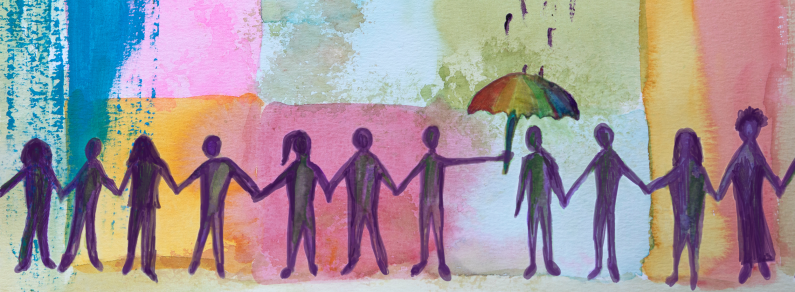
At SPRC, we believe in the power of words to help effect positive change, in people and the world around us. But after recent incidents of mass violence, we’ve struggled with the limitations of language to convey what many of us have at times felt—grief, anger, even despair—and to communicate a helpful vision for a […] See more...
-
Child Abuse Prevention Is Suicide Prevention

As pandemic disruptions stretch into a third year, creating supportive environments for children and families can help reduce the risk of child maltreatment—and prevent suicide. Throughout COVID-19, risk factors for child abuse and neglect are up, which may increase the short- and long-term risk of suicide. Providing families with the supports they need now can […] See more...
-
Stepping Up and Affirming LGBTQI+ Youth

At the beginning of March, Health and Human Services (HHS) Secretary Xavier Becerra released a statement reaffirming HHS support and protection for LGBTQI+ children and youth. The statement was made in response to state legislatures enacting an unprecedented number of anti-LGBTQ+ policies in 2021. According to the Human Rights Campaign, 2021 saw the highest number of anti-LGBTQ+ state laws passed […] See more...
-
Children’s Mental Health
The American Academy of Pediatrics (AAP), the American Academy of Child and Adolescent Psychiatry (AACAP), and the Children’s Hospital Association (CHA) have declared a national state of emergency in children’s mental health. They call for strategic action to increase access to quality care to prevent and treat mental health issues for children and families. To help address […] See more...
-
The “Double Closet:” Why Some Bisexual People Struggle with Mental Health
The New York Times Bisexual people may experience more mental health challenges than their peers. A 2017 meta-analysis found bisexual participants had higher rates of depression and anxiety than heterosexual participants, and higher or equivalent rates than those who were gay. Public health experts and people with lived experience suggest these mental health challenges may be related […] See more...
-
Emergency Department Visits for Suicide Attempts during COVID-19
The Centers for Disease Control and Prevention (CDC) has released a report on emergency department visits for suspected suicide attempts among youth ages 12 to 25 before and during the COVID-19 pandemic. According to the report, visits for suspected suicide attempts began to increase in May 2020 among adolescents ages 12 to 17, especially girls. From February […] See more...
-
The Power of Listening

In honor of Pride Month, we had the pleasure of speaking with Sam Brinton about LGBTQ youth mental health and lived experience in suicide prevention. A leading advocate for LGBTQ youth worldwide, Brinton is The Trevor Project’s vice president of advocacy and government affairs and a member of SPRC’s Lived Experience Advisory Committee. Q1. The […] See more...
-
Child Abuse Prevention is Suicide Prevention

It is becoming more evident that preventing child maltreatment can help prevent suicide. During the COVID-19 pandemic, risk factors for child abuse and neglect are elevated, which may increase the risk of suicide in both the short and long term. Providing families with the supports they need now can help protect children from maltreatment and […] See more...
-
A New Partnership for Suicide Prevention

This Suicide Prevention Month, we have some good news to celebrate: the Suicide Prevention Resource Center (SPRC) has been funded for another five years! We are delighted to announce a new partnership between the University of Oklahoma Health Sciences Center (OUHSC), the University of Oklahoma Outreach Southwest Prevention Center (SWPC), and Education Development Center (EDC) […] See more...
-
When Things Aren’t OK With a Child’s Mental Health
The New York Times As the school year starts, experts encourage parents to pay close attention to their kids’ mental health. Children may experience increased anxiety and depression during the pandemic, and school may bring added stress for some. Experts suggest parents talk with kids about how they are feeling and be mindful of how […] See more...
-
COVID-19 Adds to Challenges for LGBTQ Youth
American Heart Association News COVID-19 may add to the mental health challenges of LGBTQ young people. According to a recent report from The Trevor Project, physical distancing could separate LGBTQ youth from already limited sources of support. For those who lack caring relationships at home, being cut off from social networks could be especially hard. In addition […] See more...
-
COLORADO: Mental Health Care in Colorado Has Gone Virtual Thanks to Coronavirus. For Some Patients, It’s Long Overdue.
The Colorado Sun Colorado mental health providers are adapting to meet changing needs during COVID-19. Following guidance from state and federal agencies, mental health professionals can receive temporary insurance reimbursement for telehealth appointments. In response, many have moved their in-person therapy sessions online, meeting with clients via phone or computer. The state’s 17 community mental health […] See more...
-
MINNESOTA: New Collaborative Project Targets Mental Health, Substance Abuse, and Childhood Trauma in Becker County
DL-Online A collaborative effort is working to expand access to mental health and substance abuse supports in Becker County. Project Hope is run by a committee representing every sector of the community, including schools, nonprofits, and health care organizations. Formed a few months ago, the group has identified seven action steps to address mental health […] See more...
-
Archived Webinar: Screening Youth for Suicide Risk
The Children’s Safety Network (CSN) webinar on screening youth for suicide risk is now available online. It presents data on youth suicide and evidence on suicide risk screening, and also discusses the Ask Suicide-Screening Questions (ASQ) Toolkit for health care settings and the Signs of Suicide (SOS) program for schools. See more...
-
NEW HAMPSHIRE: Young Adults Raising Awareness in Carroll County
United Way News Young adults in Carroll County recently received training in substance abuse and suicide prevention. Ages 18 to 25, participants included social work graduates, first responders, people in recovery, parents, and school and hospital staff. Trainees learned how to recognize and respond to those in crisis and connect them with community resources. They […] See more...
-
MINNESOTA: Thrive Range to Receive Grant Funding from Minnesota Dept. of Health
CBS 3 Duluth A Minnesota program has received funding to expand its suicide prevention efforts. The Thrive Range program, which provides mental health and substance abuse resources to rural parts of St. Louis County, won the four-year grant from the state department of health. The funding will help the program work with local health care […] See more...
-
Building Life Skills, Connectedness, and Resilience in Youth
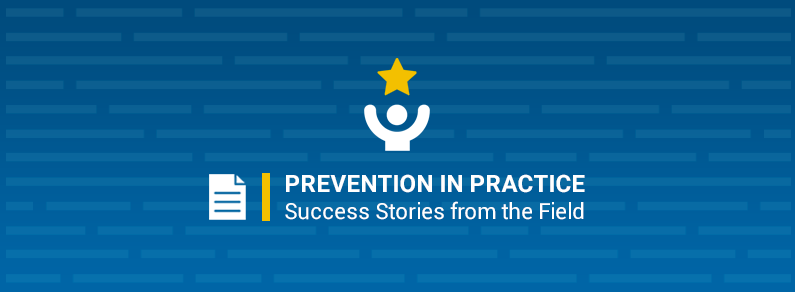
The Challenge Many youth in the juvenile justice system face very difficult life circumstances, such as poverty, unstable households, mental health issues, disabilities, and low educational achievement.1 Just as disheartening, these incarcerated youth also have higher rates of suicidal thoughts and behaviors than their peers.2 Several years ago, Native Americans for Community Action, Inc. (NACA) in northern Arizona noticed that […] See more...
-
The Suicide and Opioid Link: Translating Knowledge into Action

The intersection between suicide and the opioid epidemic was front and center at this year’s American Association of Suicidology (AAS) annual conference, as our field explored the theme of “Converging Fields, Expanding Perspectives.” Presentations ranged from data mapping of suicide and opioid overdose hotspots to better understanding the language and context of the substance abuse prevention and treatment […] See more...
-
Association between 13 Reasons Why and U.S. Suicide Rates
The Journal of the American Academy of Child & Adolescent Psychiatry (JAACAP) has published research on the association between the release of Netflix’s 13 Reasons Why and U.S. suicide rates. It found that there was a nearly 30 percent increase in the overall suicide rate among U.S. youth ages 10 to 17 in the month following the show’s release. Read a statement from […] See more...
-
Community support resource for those impacted by gun violence
This resources helps community members identify and support those impacted by mass shootings such as the Marjory Stoneham Douglas High School and Sandy Hook. Milestone anniversaries and heightened media attention have shed light on the lasting impact on communities and individuals involved in these tragic events. While many survivors are resilient, some trauma survivors, loved […] See more...
-
Supporting Survivors of Traumatic Events

A few weeks ago, we witnessed the tragic suicide deaths of several individuals who had been affected by school shootings. The national suicide prevention field was quick to respond with press releases highlighting help and prevention resources, and consultation with national news media to help them shape their coverage of these deaths. In the aftermath of these losses, let’s […] See more...
-
Suicide After Surviving Mass Trauma Isn’t Inexplicable. And There Are Ways to Help.
NBC News People who have experienced trauma often need long-term support to recover, say experts. Traumatic events, such as mass shootings, can have a lasting effect on anyone connected to the event—not just immediate bystanders. Experts recommend that communities develop systems to ensure individuals and families have support after such events. It is especially important […] See more...
-
After Suicides of Parkland Survivors, Here’s What Educators Should Know About Supporting Students
Education Week In the aftermath of recent suicide deaths, experts are sharing guidance on how to support young people at risk. Students who are struggling can benefit from a caring conversation, said Christine Moutier, chief medical officer of the American Foundation for Suicide Prevention. Teachers can play an important role in supporting these students by […] See more...
-
Moving into a New Year

Happy New Year! As 2019 begins, please join us in pausing to reflect on some milestones from the past year in suicide prevention, as well as how we can make the most of the year to come. In 2018, suicide prevention continued to gain momentum as a national priority, with increased public awareness and media […] See more...
-
Childhood Trauma and its Lifelong Health Effects More Prevalent among Minorities
NPR The largest national study of its kind found that some groups are at increased risk of adverse childhood experiences. Researchers used data from more than 200,000 people who answered questions about traumatic events in their childhood. Such events included parental separation or divorce; physical, emotional, or sexual abuse; domestic violence; and living with someone […] See more...
-
Addressing Suicide among Black Americans

Our national conversation about suicide prevention has included a recent focus on the increased risk of suicide among Black children under the age of 12 and the possible factors linked to it.1-3 A similar uptick in scientific and public attention occurred about 20 years ago, when studies highlighted a marked increase in suicide rates among Black […] See more...
-
Help the Helpers: Taking Time for Self-Care

I often reflect on how fortunate we are, in suicide prevention and related fields, to work with such compassionate people, dedicated to reducing suffering and saving lives. Whether working at the national, state, or community level, we regularly meet people who work tirelessly to help others—day and night, week after week. Many of us have […] See more...
-
What Educators Need to Know About Suicide: Contagion, Complicated Grief, and Supportive Conversations
Education Week Prevention experts are helping to empower educators to address suicide in schools. The American Foundation for Suicide Prevention (AFSP) has developed resources to help school staff talk about suicide and mental health issues with students. They recommend that teachers help foster an open dialogue about these topics but avoid details that could increase […] See more...
-
13 Reasons Why: An Opportunity for Prevention

Last year, the Netflix show 13 Reasons Why made quite an impact. Teens and young adults were mesmerized by a show that tackled the issues of bullying, sexual assault, and suicide head-on, and in graphic detail. Parents, schools, and suicide prevention professionals were frustrated that the show took a potentially unsafe approach, worried about the show’s impact […] See more...
-
VIRGINIA: These Teens Saw How Poor Mental Health Hurt Their Peers. So They Got a Law Passed.
The Washington Post Virginia has passed a law requiring mental health education for ninth and tenth graders. Under the new law, the Virginia Board of Education must consult mental health experts and update the state’s health education protocol to include comprehensive mental health instruction. Support for the law was generated by local high school students, […] See more...
-
MONTANA: Montana Communities Receive State Funding For Community-Based Suicide Detection and Prevention
Montana Public Radio Montana has awarded suicide prevention grants to nine community organizations, health care providers, and school districts across the state. The $372,000 in funding was allocated in the state’s 2017 suicide prevention bill. Grant recipients may use the funding to scale up existing efforts or establish new ones, but all efforts must be […] See more...
-
Technology and Suicide Risk: Moving Beyond Fear to Opportunity

Communication has changed in the 10 years since I started at SPRC, especially in our virtual lives. On my ride to work on the commuter rail these days, most of the passengers are texting, checking news updates on tablets, and working on laptops, when just a few years ago we might have been reading books […] See more...
-
NEW YORK: Mental Health Education Required for New York Students
9NEWS School health curricula in New York State will soon include mental health education. Starting next year, all elementary, middle, and high schools will be required to provide mental health instruction to students. New York is the first state to implement this mental health education requirement. “We want to get help to people early so […] See more...
-
PENNSYLVANIA: Student Suicides: How Does the City Respond?
The Notebook Philadelphia health officials are working with the city’s school district to prevent student suicide. The Department of Behavioral Health and Intellectual disAbility Services (DBHIDS) often provides supplemental clinical support to the school district following a student suicide death. According to Kamilah Jackson, psychiatrist and deputy chief medical officer for DBHIDS Child and Adolescent […] See more...
-
It’s Not Just Chris Cornell: Suicide Rates Highest among Middle-Aged Men
NBC News White men between the ages of 45 and 65 account for a disproportionate share of the country’s suicide deaths. According to experts, men are often reluctant to seek help or access health care unless prompted by family members. American Association of Suicidology President and University of Kentucky School of Social Work professor Julie […] See more...
-
13 Reasons Why
This resource lists common questions about the Netflix series 13 Reasons Why from parents, schools, the media, and community leaders, with resources to help you talk about the series and suicide risk and prevention. See more...
-
Youth suicide and self-harm prevention: 2017 resource guide
This guide divides selected resources into seven main sections: (1) Organizations, (2) Policy and Legislation, (3) Evidence-Based Practices, (4) Program Planning, (5) Campaigns, (6) Data and Research, and (7) Resources and Publications. There are subsections on (1) Bullying; (2) Family; (3) Electronic, Social, and Mass Media; (4) Mental Health; (5) Schools; (6) Substance Use; (7) […] See more...
-
NEW JERSEY: New South Jersey Suicide Prevention Program Wants to Get People Talking
CBS Philly South Jersey social service and law enforcement representatives have collaborated on the development of a youth suicide prevention program. Responding to an increase in suicide among middle school students, Jewish Family and Children’s Service Executive Director Marla Meyers and Cherry Hill Police Chief William Monaghan created This Life Counts to promote awareness about children’s mental […] See more...
-
Changing the Story
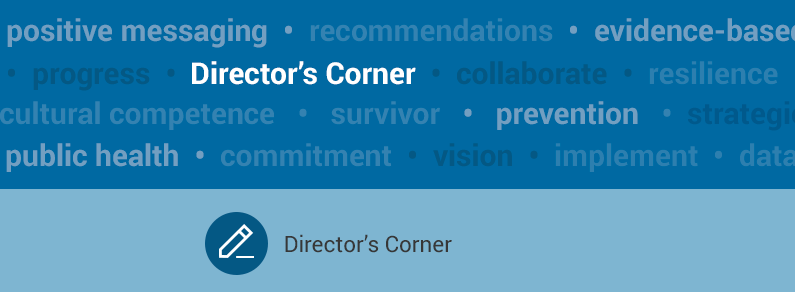
I’m a commuter. Twenty-five miles and approximately an hour (two or three when it snows) one way every day for 15 years. I’ve never counted, but I make my way through at least 30 traffic lights on one of the busiest roads in Colorado. It’s cool—I’m used to it and it gives me time to […] See more...
-
Stopping Suicides on Campus
Scientific American Colleges and universities across the U.S. are adopting new methods for addressing mental health issues and preventing suicide on campuses. While traditional approaches have focused on awareness, shame reduction, and access to mental health treatment, suicide rates among students have remained high. This has prompted some schools to consider more novel interventions, such […] See more...
-
GUAM: Suicide Prevention Training Focuses on Intervention
KUAM News The Guam Behavioral Health and Wellness Center is offering a month-long series of workshops to train community members in suicide prevention. Training topics include suicide intervention, strategies for dealing with stress and depression, and skills for coping with suicide loss. Suicide Prevention Specialist Michelle Sasamoto said that the Center has trained nearly 3,000 individuals, […] See more...
-
The New SPRC.org

The Suicide Prevention Resource Center (SPRC) is proud to announce the launch of its new website, which was designed to reflect the enormous progress made in the science and practice of suicide prevention since SPRC first went online in 2002. In the last 14 years, we have increased our understanding of why people die by […] See more...
-
Surveillance Success Stories – White Mountain Apache Tribe

The White Mountain Apache Tribe requires community members, first responders, and medical, school, and social service personnel to report suicidal behaviors, non-suicidal self-injury, and binge alcohol and drug use to the tribe’s Celebrating Life project. This program conducts in-person follow-up visits on every report. The data is also included in a secure database that provides […] See more...
-
MONTANA: Promising New Youth Suicide Prevention Intervention Program to be Provided in Montana
Montana State University A new research-based suicide prevention program to develop mental health resiliency in youth will be implemented during the next school year in 11 schools across Montana, including in several American Indian reservation schools. Youth Aware of Mental Health (YAM) was shown in European countries to decrease suicidal thoughts and attempts by over […] See more...
-
Suicide Risk Can Be Intercepted in the Emergency Department, Study Finds
Medical Xpress Universal screening for suicide risk in emergency departments (EDs) was shown to almost double the number of patients who were identified as positive for suicidal ideation or had attempted suicide, according to a new study from the University of Massachusetts Medical School that was just published in the American Journal of Preventive Medicine. Following implementation, […] See more...
-
Friend2Friend
Friend2Friend is a 25-minute, online, interactive training program for high school students. In the training, users assume the role of a high school student concerned about a friend and engage in a simulated conversation with this friend. Users learn and practice effective conversation strategies for broaching the topic of psychological distress, motivating the peer to seek […] See more...
-
Healing the healers: What’s being done to address physician suicide?
Healthcare Dive Several medical organizations and schools have been taking steps to address the problem of physician burnout, depression, and suicide. A number of the efforts have been focused on medical students and residents. In 2009 Saint Louis University School of Medicine started implementing a new model for addressing students’ mental health by making changes […] See more...
-
Identity as Strength among LGBTQ Youth
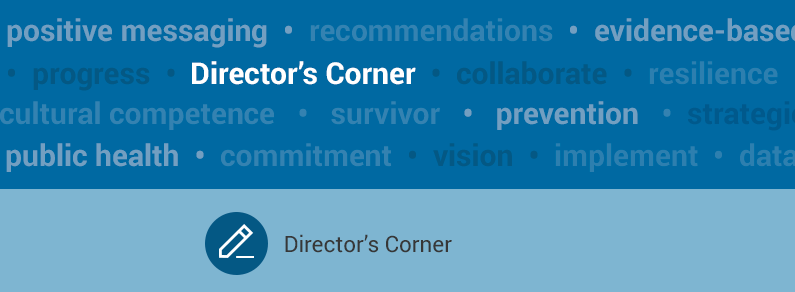
LGBTQ (lesbian, gay, bisexual, transgender, and queer/questioning) youth are four times more likely to attempt suicide than their heterosexual peers. Much of this risk is a consequence of being rejected, ostracized, and harassed for simply being who they are. This rejection can come from their peers, their schools, and their families. LGBT youth who come […] See more...
-
Suicide Prevention
This is the suicide prevention section of the Virginia Department of Health’s website. It includes basic information and links to resources for a wide range of audiences, including families, schools, colleges and universities, military and veterans, mental health professionals, primary care, emergency departments, and the media. See more...
-
Surveillance success stories – White Mountain Apache Tribe (WMAT)

Through tribally-mandated data collection, the WMAT was able to identify those under 25 as most at risk and plan targeted interventions. See more...
-
ALASKA: In rural Alaska, a new approach to fighting suicide emerges
Alaska Dispatch News A new way of carrying out suicide prevention is being implemented for young Alaska Natives, a population with one of the highest suicide rates in the U.S. It was successfully implemented in Northwest Alaska and now is being started in the Yukon-Kuskokwim Delta. Through this program, Alaska village residents are gathering at […] See more...
-
Why helping civilian providers understand military culture matters
Defense Centers of Excellence Some service members and veterans prefer to see civilian health and mental health care providers, and understanding military culture can enable these providers to treat them more effectively. “Veterans who are younger don’t trust doctors for medical advice. Most of them search the Internet for information or reach out through social […] See more...
-
Healthy Minds Network releases 2014-2015 data report
The annual Healthy Minds Network data report provides a detailed picture of mental health and related issues in college student populations. Schools can use this data to identify needs and priorities, plan for services and programs, and advocate for resources. See more...
-
CALIFORNIA: Caltrain, South Bay communities work to reduce suicides on train tracks
KQED Each year, transit police in California’s South Bay area who have received crisis intervention training intervene in dozens of potentially suicidal incidents. A state Department of Transportation study showed that most suicides that involve the Caltrain railway system take place in this area, and the company has joined with community mental health organizations to […] See more...
-
SOUTH DAKOTA: Preventing suicide with a “contagion of strength”
NPR For seven years, South Dakota’s Rapid City Central High School has been using a suicide prevention program called Sources of Strength, and school leaders are happy with the results they are seeing. A three-year study of schools in three states found that the program significantly increases help-seeking by students, especially those who are or […] See more...
-
Connectedness and Adolescents (Part 1)
The authors of a literature review have concluded that there is a significant association between social connectedness and protection against suicidal thoughts and behaviors among adolescents. This week, we will explore the authors’ suggestions about how connectedness protects young people. In an upcoming issue of the Weekly Spark, we will explore the implications of these findings […] See more...
-
NEW JERSEY: N.J.-funded experts get the call when tragedy strikes
The Record Each county in New Jersey has a trained, state-coordinated crisis team that is ready to respond in the event of a traumatic event affecting children. The Traumatic Loss Coalition for Youth (TLC)’s focus is on trauma response and suicide prevention after losses due to suicide, homicide, accident, or illness. Funded by the state […] See more...
-
Riverside Trauma Center postvention guidelines
This document offers guidelines for schools, organizations, and communities to follow after a suicide occurs. Special attention is paid to balancing the needs for commemorating the deceased and preventing a possible contagion effect, as well as addressing trauma issues that may be present. The Riverside Trauma Center Postvention Protocols provide communities and organizations with recommendations […] See more...
-
Framework for successful messaging: Guidelines topic list
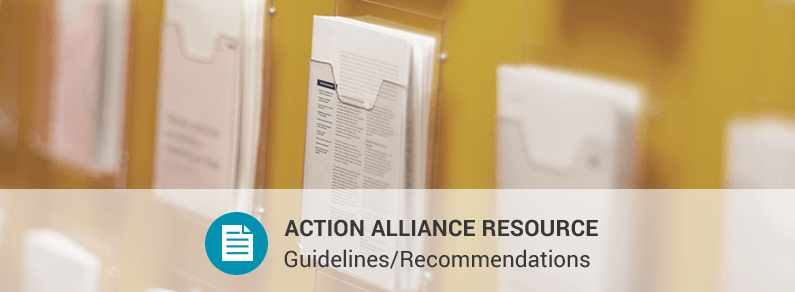
This directory includes communications resources for specific goals, channels, audiences, and contexts (e.g., postvention, schools). See more...
-
How to talk to a child about a suicide attempt in your family

This guide is intended to provide support and share resources that may be helpful if there has been a recent suicide attempt in the family. Each of three sections provides information and ideas specific to the preschooler, school age and teenager age groups. It is also available in Spanish Language. See more...
-
Suicide Prevention among LGBT Youth: A Workshop for Professionals Who Serve Youth
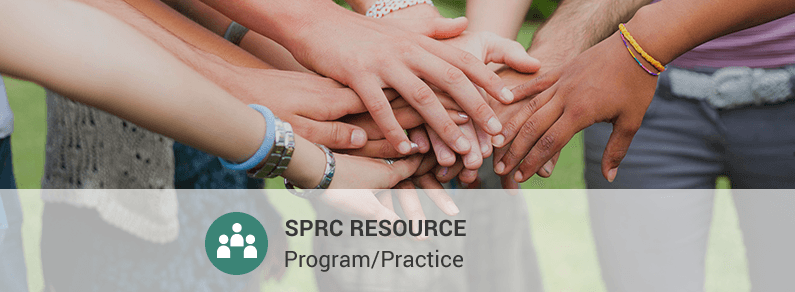
Suicide Prevention among LGBT Youth: A Workshop for Professionals Who Serve Youth, developed by the Suicide Prevention Resource Center, is a free kit of materials to help staff in schools, youth-serving agencies, and suicide prevention programs provide a workshop on suicide prevention among LGBT youth. Individuals attending this workshop may include teachers, school administrators, child […] See more...
-
Youth suicide: Gaining traction in treating mental illness
The Lebanon Express Thanks to state legislation passed earlier this year, Oregon has strengthened its youth suicide prevention efforts. Oregon now employs two statewide youth suicide prevention coordinators; one will continue to focus on prevention, while the other addresses the state’s services for youth in crisis. For the first time, Oregon is requiring data on […] See more...
-
Learning from California
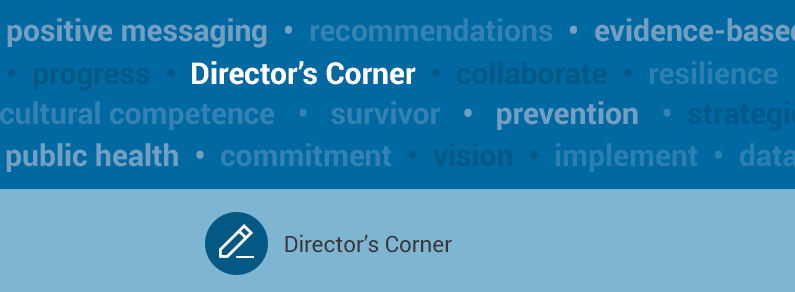
Anara lives and works in California The State of California has a long history of innovation in suicide prevention. In 1958 Edwin Schneidman founded the nation’s first comprehensive suicide prevention center in Los Angeles. The first community-based telephone crisis center in the United States was established in San Francisco in 1962. This history of innovation […] See more...
-
Three ways students with mental illness can prepare for college
US News and World Report For teenagers with mental illnesses, entering college for the first time can be a stressful experience. As Victor Schwartz, medical director at The Jed Foundation, points out, “When many people move from high school into college they have this fantasy that well, it’s a new chapter of their life, so whatever […] See more...
-
Networks for Life: An Educator’s Role in Youth Suicide Prevention
Networks for Life: An Educator’s Role in Youth Suicide Prevention is a 3-hour training on suicide prevention, intervention, and postvention in the school setting. Designed for use in Washington State, it covers (1) the scope of youth suicide locally; (2) risk and protective factors; (3) school policies, procedures, and crisis response plans; (4) strategies for creating […] See more...
-
Rural Solutions helps with suicide, poverty, health
The Fort Morgan Times The Rural Solutions program provides a wide range of services to prevent suicide, reduce poverty, and improve health and wellness among people in Northeast Colorado. The initiative partners with a variety of local groups to offer a number of programs, including free therapy for depressed or suicidal youth, suicide prevention training, […] See more...
-
Police training in crisis intervention paying off
The Spokesman-Review The Spokane Police Department has recently introduced weeklong Crisis Intervention Training (CIT) to the comprehensive suicide prevention efforts taking place through the Spokane Regional Health District, police, nonprofits, schools, and other organizations. It involves sessions with local mental health professionals, mock training scenarios, and conversations with people who are mentally ill. More than […] See more...
-
Suicide Prevention Task Force gathering steam in Truckee/Tahoe
The Truckee/Tahoe community in California established a suicide prevention task force after six suicide deaths occurred among young people ages 12- 23 in the last 2½ years. The task force includes Placer and Nevada counties, the Tahoe Truckee Unified School District, the Community Collaborative (representing 45 nonprofit organizations), and the Truckee Tahoe Community Foundation. The task force convened two community meetings involving approximately 200 community members to discuss community-driven solutions. Several programs have been implemented at local high schools, including centers offering wellness education, resources, and support; a health and wellness screening program to identify at-risk students and refer them for professional treatment; and Sources of Strength, a program designed to increase help-seeking and connections between peers and caring adults. Within the general community, QPR (Question, Persuade, and Refer) is being implemented to train gatekeepers. The task force is also involved with California’s statewide Know the Signs campaign to prevent suicide and reduce stigma and discrimination related to mental illness See more...
-
Suicide Postvention as Suicide Prevention
This sheet contains resources from which you can learn more about how suicide postvention can be used to help prevent suicide and resources to help develop postvention messages, programs, trainings, and guidelines in a variety of settings including schools, workplaces, community organizations, support groups, and the media. See more...
-
Journey to Wellness
Journey to Wellness (J2W) is an eight-week wellness program for American Indian youth 12-18 years of age. Participants receive a sequenced set of eight one-hour sessions that are framed positively toward healthy living styles while at the same time exploring risk factors, suicide prevention, and other suicide-related issues. The sessions are activity-oriented and designed to engage […] See more...
-
Trevor Lifeguard Workshop
Trevor Lifeguard Workshop is a 1-hour interactive workshop for middle school, high school and college-age youth that describes the mental health, suicide, and self-care resources provided by The Trevor Project. There are two versions of the workshop: one for lesbian, gay, bisexual, transgender, and questioning (LGBTQ) youth and one for general youth audiences. Workshops are given […] See more...
-
Just Talk About It: Suicide Prevention Toolkit
Please note that the CONTACT Crisis Line ceased operation on 12/31/14. To our knowledge, this training is no longer being disseminated. This listing is retained for archival purposes because some organizations continue to offer the program using previously trained facilitators. Developed by the Teen CONTACT Program at CONTACT Crisis Line, Just Talk About It: Suicide […] See more...
-
JedCampus
This online self-assessment is for colleges to evaluate their compliance with the Jed Foundation/SPRC Model for Mental Health Promotion and Suicide Prevention. See more...
-
MentalHealth.gov
Launched in mid-2013, this website serves as a portal for mental health information and help resources. Its goal is to inform the public, first responders, schools, policymakers, governments, businesses and communities. Content is contributed by the CDC, NIH/NIMH and SAMHSA. See more...
-
Help Seeking by Young People: Part II
A study of help-seeking among high school students who had seriously considered suicide in the past 12 months found that “knowing adults who are trustworthy and capable of helping with suicide concerns was the most robust predictor of youth help-seeking…” Other factors associated with help-seeking included positive attitudes toward help-seeking from school staff, student engagement […] See more...
-
Break Free from Depression: A 4-Session Curriculum Addressing Adolescent Depression
Developed at Boston Children’s Hospital, Break Free from Depression is a school-based curriculum designed to increase adolescents’ awareness and knowledge about depression, enhance their ability to recognize signs and symptoms in themselves and their friends, and increase students’ skills and strategies for finding help for themselves and their peers. This 4-session curriculum for high school students combines didactic […] See more...
-
Connect Youth Leaders: Partnering with Adults in Youth Suicide Prevention
Developed by NAMI NH, Youth Leaders is a two-day training for youth leaders and adult co-facilitators that prepares youth and adults to conduct Connect Youth Suicide Prevention training for teenage audiences. Friends of youth at risk are typically the ones who see suicidal warnings before adults. Because youth may not know what to do about a friend at risk, […] See more...
-
QPR Gatekeeper Training for Suicide Prevention
This brief in-person or online educational program is designed to teach diverse audiences to recognize and refer someone at risk of suicide. See more...
-
Kognito At-Risk for College Students
This online role-playing simulation trains college students to recognize when peers show signs of psychological distress and respond helpfully. See more...
-
LEADS: For Youth (Linking Education and Awareness of Depression and Suicide)
This high school curriculum is designed to increase knowledge of depression and suicide and related resources and to improve intentions to engage in help-seeking behaviors. See more...
-
Youth Suicide Prevention Referral and Tracking Toolkit

This toolkit can help school personnel track youth referred for suicide risk and use this information to inform suicide prevention practice. See more...
-
What are you doing for Suicide Prevention Week and World Suicide Prevention Day?

The week of September 4-10, 2011 is designated as Suicide Prevention Week in the United States. On September 10, 2011, World Suicide Prevention Day will be acknowledged globally. This week provides us opportunities to engage many who might not otherwise be aware of the magnitude of suicide. In the United States, over 34,000 people die […] See more...
-
Not My Kid: What Every Parent Should Know
Created by The Society for the Prevention of Teen Suicide, Not My Kid: What Parents Should Know About Teen Suicide is a 17-minute web-based video that features eight parents from culturally diverse backgrounds asking two mental health professionals a variety of common questions about youth suicide. It was designed to: Increase parental awareness about the […] See more...
-
Lifelines Curriculum
The Lifelines Prevention student curriculum (formerly known as the Lifelines Curriculum) is one component of Lifelines: Helping A Comprehensive Suicide Awareness and Responsiveness Program for Teens, a comprehensive, schoolwide suicide prevention program for middle and high schools. The goal of the overall Lifelines program is to promote a caring, competent school community in which help-seeking […] See more...
-
Be A Link Suicide Prevention Gatekeeper Training
Developed by Yellow Ribbon, Be A Link! is a two-hour adult gatekeeper training program. The program can be implemented in a variety of settings, including schools, workplaces, and community groups. The training provides participants with knowledge to help them identify youth at risk for suicide and refer them to appropriate help resources. Training includes information […] See more...
-
Ask 4 Help Suicide Prevention for Youth
Developed by Yellow Ribbon, Ask 4 Help! is a one-hour high school-based curriculum that provides students with knowledge that may increase help-seeking for themselves or on the behalf of others. A central feature of the curriculum is the Ask 4 Help! wallet card. The card contains information on how to seek help, including a three-step […] See more...
-
Helping Every Living Person (HELP) Depression and Suicide Prevention Curriculum
Developed by Washington State, the Helping Every Living Person: Depression and Suicide Prevention Curriculum (HELP) educates students about depression and suicide prevention. HELP consists of four 45-minute lesson plans on the following topics: Stress and depression. Risk factors and warning signs of suicidal behavior. Suicide intervention skills. Practice of intervention skills and problem-solving skills (for […] See more...
-
Connect Suicide Postvention Training
Developed by NAMI New Hampshire, the Connect Suicide Postvention program increases the capacity of a community or organization to respond effectively to a suicide death in order to prevent additional suicides and promote healing for survivors of suicide loss. The shock and grief of a suicide goes well beyond immediate family and friends and can ripple throughout […] See more...

